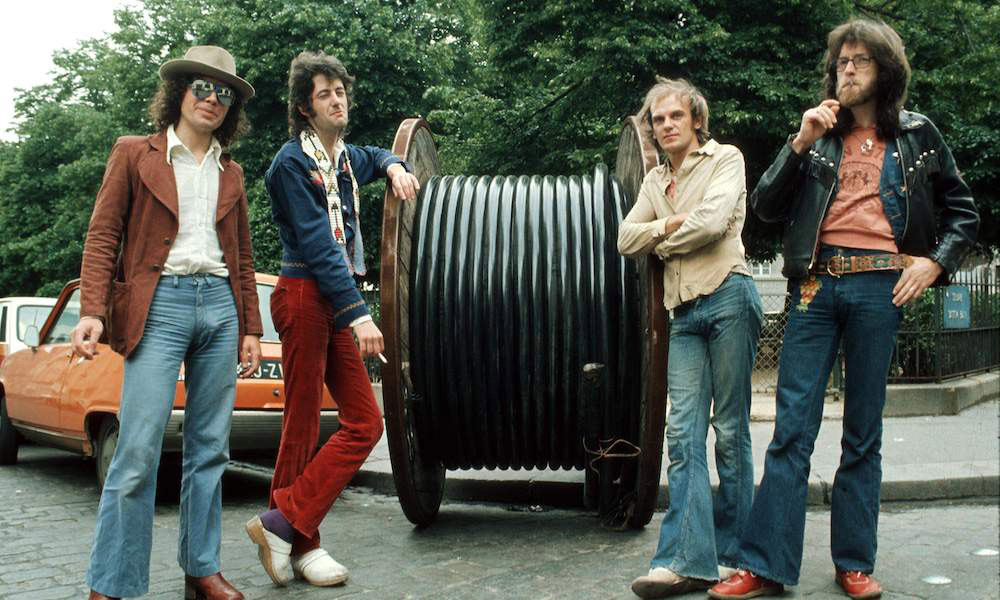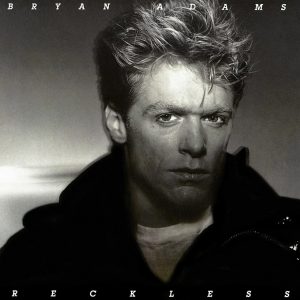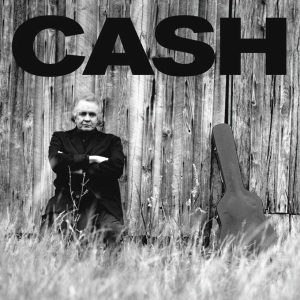Named for a device that creates high-voltage electricity, Van der Graaf Generator was a shock to the system of prog’s first generation. If Yes’s sunny-voiced, utopian-minded Jon Anderson was prog’s golden boy, VDGG frontman Peter Hammill was its bad seed, its Richard III, declaiming dark, existential visions over the band’s gloriously foreboding circus of doom (however offset by moments of delicate beauty).
Though the band’s eccentricities precluded mass appeal, prog fans have always revered Van der Graaf Generator as equals of more famous peers like Genesis, King Crimson, et al. Even when punk made art-rock unfashionable, Van der Graaf got a pass. Hammill was an admitted and obvious influence on punk progenitor John Lydon and others of his ilk, ultimately earning a place in history as something like the Cain to Peter Gabriel’s Abel.
The monolithic, 20-disc box set Van der Graaf Generator: The Charisma Years tells the story of a band that demanded to be different, chronicling the eight albums they released on Charisma Records between 1970 and ’78.
Here’s a concise crop of the best Van Der Graaf Generator songs that underline both the band’s uncompromising intensity and their broad range of moods and modes.
Order Van der Graaf Generator: The Charisma Years.
The Ragers
(Killer, A Place To Survive, Cat’s Eye/Yellow Fever (Running), Sci-Finance, Nadir’s Big Chance)
When they work up a good head of steam, nobody does dangerous like Van der Graaf. Between Hammill’s fire breathing, Hugh Banton’s Phantom of the Opera organ, and David Jackson’s deployment of sax as a weapon of mass destruction, they could send Darth Vader running for the hills. “Killer” from their third album, H to He Who Am the Only One, is a fan favorite that finds Hammill feeling kinship with a killer shark making its lonely way across the ocean floor. Jackson’s ravenous riffs and Banton’s organ blasts send the feral-sounding frontman into one of his most appealingly aggro vocal performances.
In 1976 their fury factor was undiminished, as proven by “A Place to Survive” from World Record. It starts out deceptively unassuming with a slinky, funky intro. But once Hammill leans into the lyric like a manic drill sergeant telling his troops what they need to know to stay north of the ground, things get intense fast. With its primal attack, it’s one of the band’s simpler songs, but its rawness underlines VDGG’s status as punk influencers. Imagine if you can the shower scene music from Psycho being played by John Foxx-era Ultravox. The result might not venture far from the breathless hypertension of “Cat’s Eye/Yellow Fever (Running)” from The Quiet Zone/The Pleasure Dome.
The VDGG lineup that toured in 1978 sans Banton but plus violinist Graham Smith was fearsome and aggressive enough to give punks a run for their money. As documented on live album Vital, “Sci-Finance” (recorded for a Hammill solo album a decade later) is a takedown of unscrupulous businesspeople that sounds more like a precursor to The Birthday Party’s post-punk chaos than anything prog-related.
It’s surely the most slamming song ever to use the word “debenture.” From its “Smash the system with the song” lyrics to its primal, unrelenting roar, “Nadir’s Big Chance” from Hammill’s ’75 solo album of the same name, is a blatant punk precursor. But the Vital version goes a step further, cannily updating the lyrics to lay a burn on camp-following punks in “leather bondage suits.”
The Epics
A Plague of Lighthouse Keepers, After the Flood, Muerglys III)
You know it’s prog when the 11 ½ minute track that opens the album (“Lemmings,” which we’ll get to later) isn’t the epic. A sort of psychodynamic operetta, “A Plague of Lighthouse Keepers” is a 10-part, 23-minute suite that occupied the entirety of its original LP’s second side. This piece from 1971’s Pawn Hearts has so much going on that even Robert Fripp’s guest appearance on guitar could slip by unnoticed, yet somehow it never feels cluttered. The band took tape manipulation, overdubbing, and electronic alchemy to the next level to help spin the story of a lighthouse keeper losing his grip, with music that matches his mental dislocation step for step.
Since 1969’s The Aerosol Grey Machine was really a Peter Hammill solo album in disguise, The Least We Can Do Is Wave to Each Other is usually considered the first “proper” VDGG album. They wasted no time turning out an 11 ½ minute barn burner in “After the Flood.” Buoyed by Banton’s church-organ-on-steroids sound, Hammill unfolds a portrait of nuclear apocalypse so detailed it feels more like a news story than a prophecy, quoting Einstein’s warning about the dangers of arms-race escalation for good measure.
Who or what is “Muerglys III?” Hammill is nothing if not gleefully inscrutable, but the name appears to be a nickname for his guitar in this tale of an alienated musician’s travails. The 20-minute track from 1976’s World Record is among the band’s most thrillingly complex. It opens with a sort of avant-garde chamber music section and runs a gauntlet of unexpected twists and turns. Just to show that you can never predict the path of Van der Graaf, it improbably concludes with an extended reggae jam suggestive of Pink Floyd getting high with The Wailers.
The Ballads
House With No Door, Refugees, Mike and Susie, The Undercover Man, Your Time Starts Now
The best Van der Graaf Generator songs have always displayed more drastic mood shifts than a catering hall that’s double-booked for a bachelor party and a wake. You couldn’t ask for better evidence than the aforementioned “Killer” segueing into “House With No Door” on H to He Who Am the Only One. For the first few minutes, the latter might be an Elton John song, as Peter Hammill’s solemn piano sets the pace for an understated, melancholic tune where the title’s metaphor symbolizes loneliness and isolation. When David Jackson’s poignant flute line enters after Hammill murmurs, “Won’t somebody help me,” it makes for one of the most downright beautiful moments in the VDGG catalog.
Jackson’s flute figures mightily into the Pachelbel-with-denim vibe of “Refugees” from The Least We Can Do, mixing with cello to provide a baroque-pop frame for Hammill’s delicate falsetto. Even the subject matter is warmer and fuzzier than VDGG fans are used to, with Hammill rhapsodizing about his old roommates “Mike and Susie,” the former being Susan Penhaligon, who eventually earned renown as a TV and film actor.
The band’s tender side had actually been in place since their embryonic phase, as evidenced by “Afterwards” from The Aerosol Grey Machine, a gentle, organ-led idyll that starts out like a flower-power anthem until the other shoe finally drops. “The Undercover Man” from 1975’s Godbluff begins measured and stately, with the music threatening to turn riotous as the lyrical sentiment darkens, but things reach a surprisingly redeemable state by the end, as the track takes an almost sanctified turn.
In Van der Graaf’s later years, they gained even more gravitas when they leaned into a semi-hymnal vibe. However clear-eyed its outlook, “Your Time Starts Now” from 2011’s A Grounding in Numbers is unabashedly inspirational, and Banton’s organ is inches from ecclesiastical territory.
Prog Power
Theme One, Emperor in His War Room, Whatever Would Robert Have Said, When She Comes
As sui generis as these black sheep may be, at the end of the day they’re still a prog rock band. Their biggest brush with the mainstream was one of their proggiest moments. The pumping classical-rock instrumental “Theme One,” a single appended to later pressings of Pawn Hearts, is actually a cover of a George Martin composition. It even usurped the original’s place as BBC radio’s nightly closing theme, with the band’s version earning praise from the composer to boot.
The two-part “Emperor in His War Room” from H to He is sufficiently sinister-sounding to stand alongside the darkest of Van Der Graaf Generator songs, but its drastically shifting dynamics and a balls-out guitar shot from Robert Fripp place it solidly on the prog side of the balance sheet. “Whatever Would Robert Have Said?” from The Least We Can Do seemingly references the device invented by Robert Van de Graaff that inspired the band’s name. Its eventual applications in nuclear technology are the core of a cautionary tale full of drastic time and mood changes, making for a proggy piece as chilling as it is challenging.
“When She Comes” from World Record gives the “evil woman” rock trope an intellectual twist by casually tossing in references to classic Keats poem La Belle Dame sans Merci and British pre-Raphaelite painter Edward Burne-Jones, while Hugh Banton explodes into orchestral keyboard flurries.
The Eccentric Ones
Lemmings, Pioneers Over C, The Door)
Even by VDGG standards, Pawn Hearts’ “Lemmings” is just completely crackers, in the most deliciously dark way. Just opening your album with a 12-minute track called “Lemmings” was pretty out-there in itself in 1971. Occupying it with lines like “young minds and bodies on steel spokes impaled” and “iron-throated monsters are forcing our screams” while careening from apocalyptic fury to warped whispers takes things way further.
“Pioneers Over C” from H to He is the sound of four young British gentlemen attempting to unseat your hold on sanity. The band madly flits from moody atmospherics to an in-your-face feel, some pastoral folk-rock strumming, a bit of unaccompanied avant-garde sax mischief, and a nightmarish descent into darkness, all over the course of 13 minutes.
Hammill calling a song “a little bit odd” is akin to Wes Craven declaring something a wee bit scary, so take his introduction to “The Door” on Vital for what it’s worth. The band pummels a barbed-wire riff into submission with increasing speed and ferocity while the singer scorches the air around him, for an effect not far from Captain Beefheart & The Magic Band defending a Ph.D. thesis.
Think we’ve missed one of the best songs by Van Der Graaf Generator? Let us know in the comments section below.




